Heavy metals occur in soils in many places. Research is currently being carried out on super plants that can remove these dangerous substances from the soil.
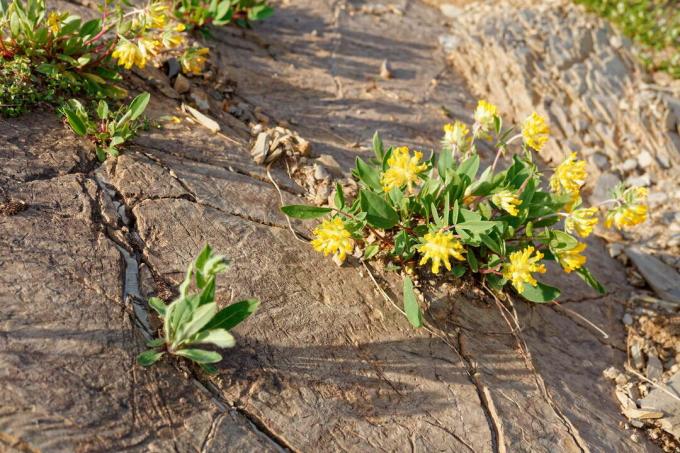
Heavy metals can get into garden soil in a number of ways. The problem is: these can accumulate in food chains, for example in vegetables that are grown on contaminated soil. Regular consumption in low doses can even lead to chronic heavy metal poisoning. In order to be able to use polluted soils completely and safely again, science is now using the power of nature - and you as a garden owner can also benefit from this.
Intensive research is currently being carried out on so-called super plants in various countries around the world. These also grow on locations that are heavily contaminated with heavy metals and are considered to be a promising approach when it comes to detoxifying heavily contaminated soils. In the following explanations you can find out what super plants are and which heavy metals are used in the Garden they can be used and which plant is suitable for removing which heavy metal is.
contents
- What are super plants?
- Heavy metals in the garden
- Soil analysis: find pollutants in the garden
-
Super plants for the garden
- 1. Common anthyllis (anthyllis vulneraria)
- 2. Banded hem fern (Pteris vittata)
- 3. Stone stone (Alyssum murale)
- 4. Sand oat / rough oat (Avena strigosa)
- 5. Brown mustard (Brassica juncea)
- 6. Broom-Radmelde / Summer cypress (Bassia scoparia syn.: Kochia scoparia)
- 7. Parsley (Petroselinum crispum)
- 8. Smooth-eyed pods (Biscutella laevigata)
- Dispose of heavy metals
- Conclusion on the super plants
What are super plants?
In France, the ecology professor Claude Grison is researching the detoxification of a former mine site and is primarily focusing on wound clover (Anthyllis vulneraria) and Hellerkraut (Thlaspi caerulescens) to remove arsenic, lead, cadmium and zinc from the soil. Plants are also used in Canada and Albania to renaturalize polluted soils. Various plant techniques are used here: while Wundklee and Hellerkraut, for example The willow is what actively absorbs heavy metals and stores them in their plant body (“hyperaccumulators”) (Salix) able to use symbiotic microorganisms to render pollutants in the soil harmless ("phytodegradation"). Around 500 such super plants have already been identified worldwide, which enable the improvement of polluted soils in various ways.

Heavy metals in the garden
In house and allotment gardens, too, excess amounts of health-relevant heavy metals can be found. In former industrial areas or landfills, as well as in former flood zones of rivers and in the vicinity of traffic routes, increased levels can be detected more frequently. In addition, the increased use of mineral fertilizers and pesticides be an entry route. And of course the distribution of contaminated soil, waste materials or domestic ashes is also a way of bringing heavy metals into the garden yourself. The good news is that heavy metal pollution in fertilizers is government controlled. However, this control is constantly changing and is considered inadequate, which is why one should not fully rely on the protective effect of the existing regulations. Pay attention to the Fertilizer purchase therefore always on a high quality.
Tip: Mineral phosphorus fertilizers in particular play a role, because rock phosphates often have high levels of cadmium and uranium. This special article deals with the Pollution of the soil by fertilizers.
The following heavy metals can be detected in increased concentrations in German gardens:
| Heavy metal | Element icon | sources | Effect on humans |
|---|---|---|---|
| lead | Pb | Fertilizer, industrial dust / rain, Lead shot ammunition, lead sheathed cables |
Ingestion via the respiratory tract or food leads to accumulation, lead is not excreted. Chronic poisoning is possible |
| cadmium | CD | Various consumer goods produced before 2011, today's paints, electrical appliances, (artificial) fertilizers and pesticides | Can lead to severe chronic and acute poisoning ingested with food |
| chrome | Cr | Chromium-containing alloys, leather goods, industrial residues, emissions from waste incineration, fungicides | Ingestion as dust leads to diseases of the respiratory tract, ingestion through food leads to chronic poisoning |
| nickel | No | Nickel-containing ore deposits, contaminated sites in industry, Emissions from waste incineration plants |
Vital trace element for plants and humans. Has an allergy-causing effect on skin contact, inhaled nickel dusts are carcinogenic |
| mercury | Ed | Garbage dumps, coal burning, garbage incineration, cement works, steel making, fertilizers | Absorption via soil dust and vapors are highly toxic. Mercury already evaporates at room temperature. Dietary intake unlikely and less dangerous |
| copper | Cu | Natural release from rock in the ground, Mining, industry, pesticides containing copper, slurry (from contaminated feed) |
Vital trace element for plants and humans. Increased intake promotes arthritis and high blood pressure |
| zinc | Zn | Dusts and wastewater from power plants, industry and mining, sewage sludge | Vital trace element for plants and humans. There is more of a zinc deficiency across Germany. Dust from heavily polluted floors can cause poisoning |
| arsenic | As | From arsenic, near-surface rocks, ore mining or enriched groundwater | Possibly vital trace element for plants and humans. Excessive intake leads to severe chronic or acute poisoning and is carcinogenic |
| uranium | U | From soil-borne rocks, phosphate fertilizers, contaminated fertilizers for animal feed also less in organic fertilizers (liquid manure, manure), contaminated sites from historical mines | Depending on the intake concentration, the toxic or radiological effects predominate. Accumulates in bones when ingested orally. Toxic effects mainly affect the kidneys |
| Thallium | Tl | From historical cement works and mines and their overburden, from near-surface ore deposits | Toxic, causes changes in the skin, hair loss, liver and kidney damage, changes in the psyche |
| antimony | Sb | From lead-containing ammunition, metal alloys, textiles containing antimony, plastics, brake linings, paints, pesticides or fireworks | Gaseous antimony is the most dangerous. Solid forms less toxic. Toxic in numerous organs: digestive tract, liver, kidneys, heart, nervous system. Small doses irritate the skin and mucous membranes |
Tip: Some heavy metals - such as nickel, copper, zinc and iron - are essential nutrients for plants and animals and occur naturally everywhere in our environment. However, they are only safe for us and for plants in these small concentrations.
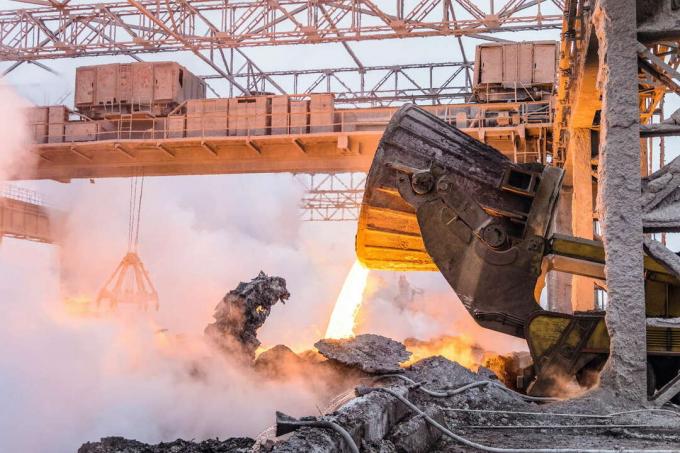
Soil analysis: find pollutants in the garden
Soil analysis is very useful for checking the condition and nutrient supply of your soil as well as those fertilization or Humus economy adjust accordingly. To find out whether there are any pollutants in your garden soil, you can have an appropriate soil analysis carried out by a specialized laboratory. To do this, take soil samples, proceeding as follows:
- At least five soil samples are required per 1000 square meters.
- The samples are taken from a depth of 20 to 25 cm at different, evenly distributed locations. Atypical places (molehills, stalemate paths, lawn edges) should be left out. In the case of lawns, it is sufficient to take a sample from a depth of 10 cm.
- The individual samples are crushed and mixed very thoroughly in a bucket. The amount required by the laboratory is taken from this mixed sample.
The pollutant analysis shows the heavy metals listed above in various tests. The laboratory will tell you whether the detected values are too high with reference to the applicable limit values. Once you have the test results for your floor, you can rest assured - or react appropriately to any increased values. A possible reaction on your part can consist in a careful selection of the vegetable plants grown, as some heavy metals are only absorbed to a greater extent by a few plant families. If you want to clear your soil of heavy metals, you can now find out more about suitable super plants in the following paragraph.
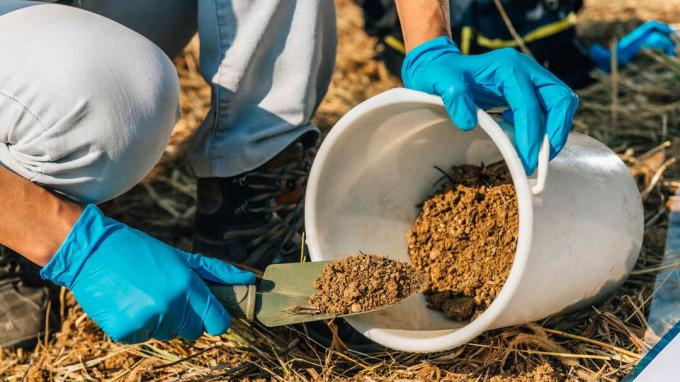
Super plants for the garden
Because research on super plants is currently in full swing, we have been able to find a suitable plant for your garden for (almost) every heavy metal mentioned above. Pictures of the super plants can be found in the slideshow.
Attention: Even if some of the plants mentioned can otherwise be used as kitchen herbs, they are no longer suitable for consumption after cultivation on a contaminated area! They accumulate the respective heavy metals in health-relevant concentrations in their roots, shoots and leaves.
1. Common wound clover (Anthyllis vulneraria)
Real wound clover effectively binds zinc (Zn) from the soil. The perennial loves sunny, dry locations and bears a number of yellow flowers in spring and summer.
2. Banded hem fern (Pteris vittata)
Banded border fern mainly absorbs arsenic (As) from the soil. The 30 to 80 cm high, evergreen fern prefers stony soils and only thrives in partially shaded or shady locations. It is only partially hardy in Germany and should be protected against frost accordingly.
3. Stone stone (Alyssum murale)
The stone herb effectively binds nickel (Ni) from the ground. The small, bushy perennial needs full sun, is a maximum of 30 cm high and has small yellow flowers in panicles. It prefers permeable, stony soils, but can also cope with normal garden soils.
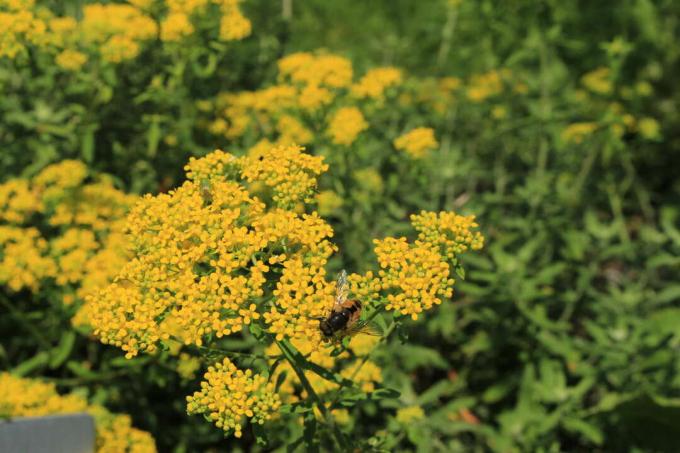
4. Sand oats / rough oats (Avena strigosa)
Sandy oats effectively binds cadmium (Cd) from the soil. The old European crop is annual and grows well in all soils. The cereal plant grows up to 120 cm high and has blue-green foliage.
5. Brown mustard (Brassica juncea)
Brown mustard effectively binds copper (Cu), nickel (Ni), lead (Pb) and zinc (Zn) from the soil. The annual cabbage plant forms upright shoots no more than 100 cm in height. All types of soil are tolerated, but fresh, moist and nutrient-rich soils are preferred. The yellow bloom appears between July and August.
6. Besen-Radmelde / summer cypress (Bassia scoparia syn .: Kochia scoparia)
The summer cypress effectively binds chromium (Cr), lead (Pb), mercury (Hg), zinc (Zn) and uranium (U). In addition, the annual ornamental leaf plant is undemanding with its fine foliage and thrives best in sun or partial shade in permeable, not too nutrient-rich soils.

7. Parsley (Petroselinum crispum)
Parsley effectively binds mercury (Hg). The actually biennial plant loves well drained and humus rich soils as well as sunny to partially shaded locations.
8. Smooth-eyeglass pods (Biscutella laevigata)
The Glatt-Brillenschötchen effectively binds thallium (Tl) from the soil. The low perennial bears decorative, yellow flowers and seed pods at a height of 25 cm. The name comes from the interesting shape of the seed pods. The eyeglass prefers fresh and at the same time stony soils in a sunny location.
Tip: For the semi-metal antimony (Sb), no effective super plant has so far been found.
Dispose of heavy metals
In order for the content of pollutants in your soil to decrease in the long term, on the one hand the repeated or permanent cultivation of super plants is necessary. On the other hand, the plant parts enriched with the heavy metals must of course be removed and disposed of and must never remain on the surface or be composted. This could even worsen the exposure: this is possible after the decomposition of contaminated plant material harmful element in a more easily soluble form in the soil and is also in the top Soil layer. Therefore, collect the cut plant parts first and dispose of them in the hazardous waste container at the recycling centers.
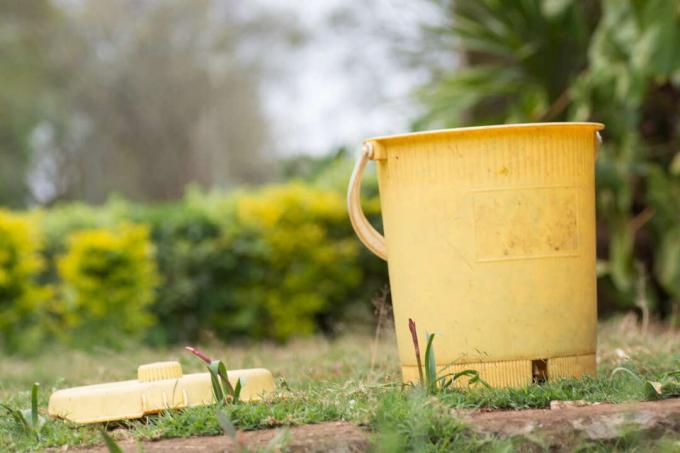
Conclusion on the super plants
In the next few years, research is sure to identify even more plants that reliably pull toxins from the soil. Under certain circumstances, this can also be relevant for house gardens. The good news is that you can take precautions in your home garden to prevent heavy metal pollution - for example, avoiding unnecessary chemicals. If you want to learn more about sustainable gardening, here are 9 tips.

